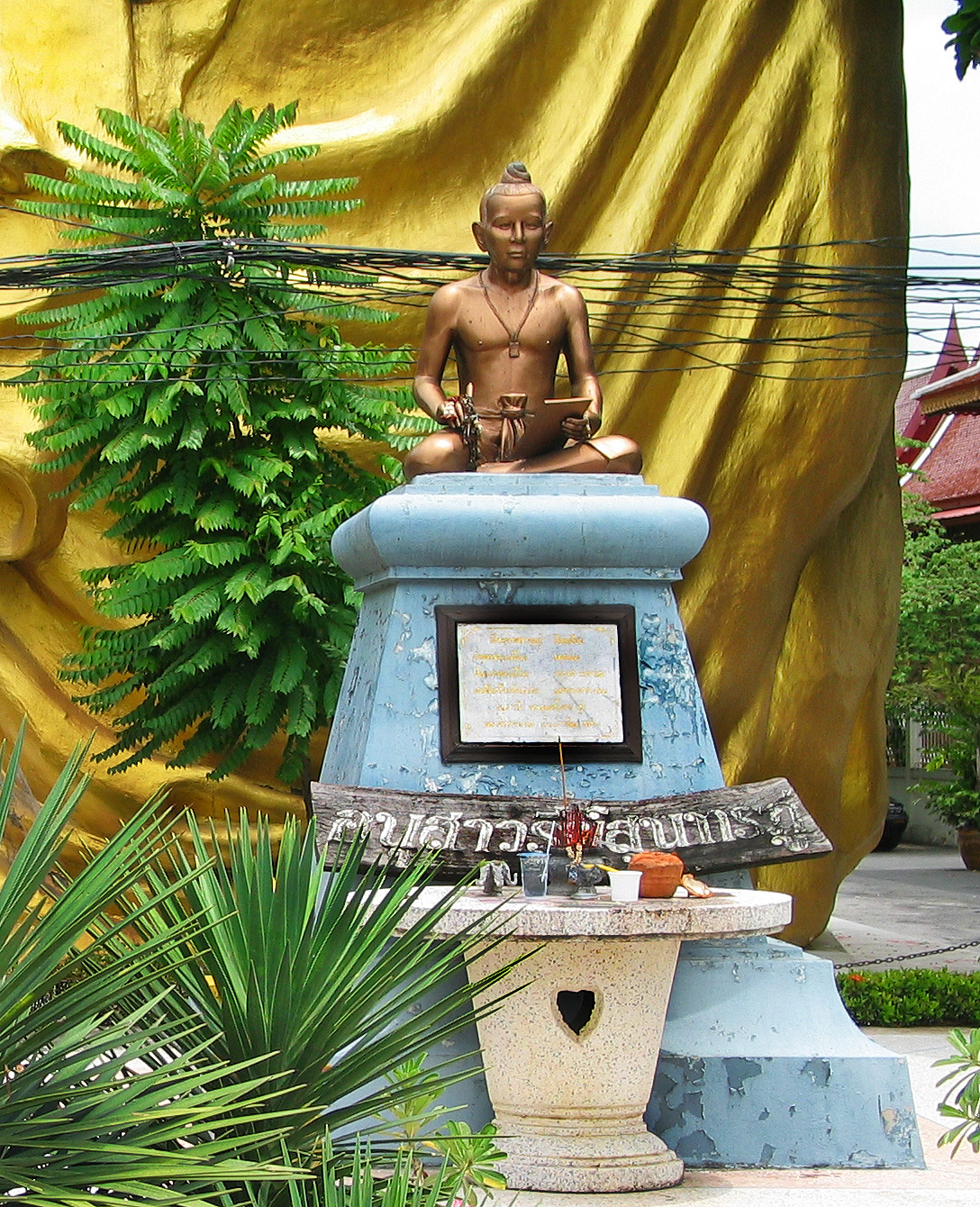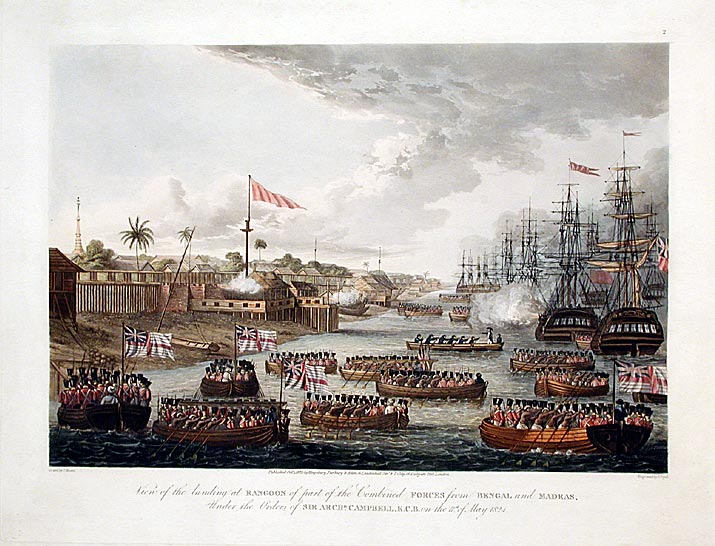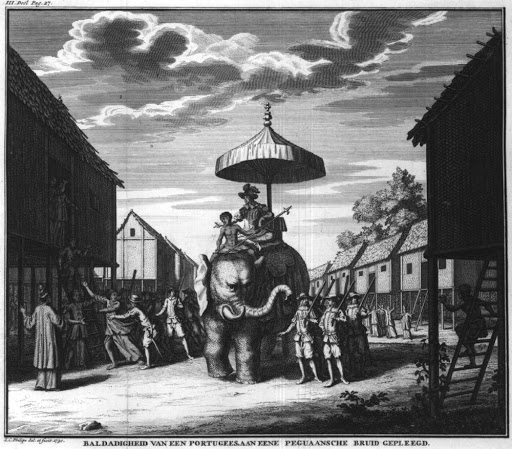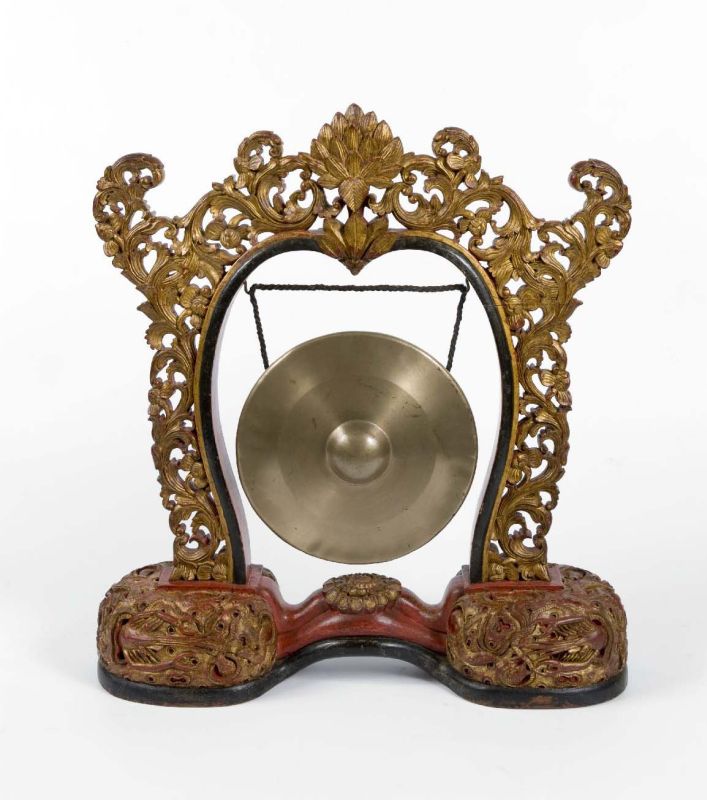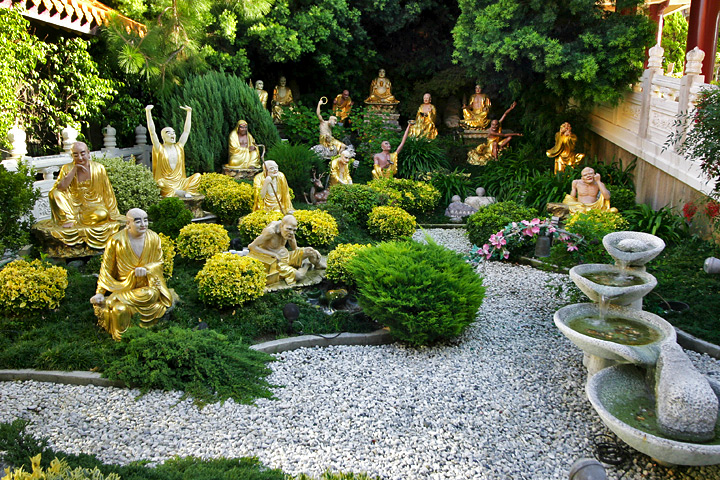|
Phra Pathommachedi
Phra Pathommachedi or Phra Pathom Chedi () is a Buddhist stupa in Thailand. The stupa is located in the Wat Phra Pathommachedi Ratcha Wora Maha Wihan (), a temple in the town center of Nakhon Pathom, Nakhon Pathom Province, Thailand. Phra Pathommachedi is the second tallest stupa in the world. The top of its spire reaches 120.45 meters, with the base circumference of 235.50 meters. The name Phra Pathommachedi means the first holy stupa, given by king Mongkut. Modern Historians believe that the stupa was one of the principal stupas of ancient Nakhon Pathom, the largest city of the Mon kingdom of Dvaravati in Nakhon Pathom area together with the nearby Phra Prathon Chedi () during the 6th to the 8th centuries. History Dvaravati Period The origins of Phra Pathommachedi have no historical record, but according to Subhadradis Diskul, a prominent Thai historian and archaeologist, Ashoka, an Indian Emperor who ruled almost all of the Indian subcontinent from circa 269 to 232 BCE, s ... [...More Info...] [...Related Items...] OR: [Wikipedia] [Google] [Baidu] |
Nakhon Pathom
Nakhon Pathom (, ) is a city (''thesaban nakhon'') in central Thailand, the former capital of Nakhon Pathom province. One of the most important landmarks is the giant Phra Pathommachedi. The city is also home to Thailand's only Bhikkhuni temple Wat Songkhammakalayani, Wat Song Thammakanlayani (), which is also open to women from abroad. Nakhon Pathom houses a campus of Silpakorn University within the former Sanam Chandra Palace. The city is 57 km west of Bangkok. According to Charles Higham (archaeologist), Charles Higham, "Two silver medallions from beneath a sanctuary at Nakhon Pathom, the largest of the moated sites, proclaim that it was 'the meritorious work of the King of Sri Dvaravati', the Sanskrit term Dvaravati meaning 'that which has gates'. The script is in south Indian characters of the seventh century." Nakhon Pathom was the largest Dvaravati center.Higham, Charles., 2014, ''Early Mainland south-east Asia'', Bangkok: River Books Co., Ltd., History Nakhon P ... [...More Info...] [...Related Items...] OR: [Wikipedia] [Google] [Baidu] |
Nakhon Chai Si District
Nakhon Chai Si (, ) is a district (''amphoe'') of Nakhon Pathom province, central Thailand. History It was established in the reign of King Maha Chakkraphat of Ayutthaya kingdom. When King Chulalongkorn created the ''Monthon'' as part of the ''Thesaphiban'' administrative reform, ''Mueang'' Nakhon Chai Si was the capital city of Monthon Nakhon Chai Si. Later when the government gave up the system, Mueang Nakhon Chai Si was downgraded to be a district of Nakhon Pathom. The name ''Nakhon Chai Si'' was established in memory of King Chaiyasiri of Singhanavati kingdom, the son of King Phrom, whom the Ayutthaya people believed to be their ancestor. More than 1,000 years ago, Han Chinese called Nakhon Chai Si (including other districts in this region, such as Samut Sakhon) according Teochew dialect that ''Leng-Kia-Su'' ( zh, 龍仔厝; pinyin: ''Lóng zǐ cuò''), refers to "home of dragon descendants". What with the Tha Chin River flows through the winding like a serpent or drago ... [...More Info...] [...Related Items...] OR: [Wikipedia] [Google] [Baidu] |
Sunthorn Phu
Phra Sunthorn Vohara (Phu) (, , ; 26 June 1786 – 1855), known as Sunthorn Phu (, , ), was a Thai poet. He is often referred to as the "Shakespeare of Thailand." Born four years after the founding of the Rattanakosin Kingdom, he entered royal service as a court scribe during the reign of King Rama II. After the King's death, he ordained as a monk for nearly 20 years before returning to government service near the end of King Rama III's reign. He served as a scribe to Prince Chuthamani, later known as Krom Khun Isaret Rangsan. During the reign of King Mongkut, he was promoted to the rank of Phra Sunthorn Vohara, Chief of the Department of Royal Scribes of the Front Palace, his final official position before his death. Phu's career as a royal poet began in the reign of King Rama II, and when the king died, he resigned from the role and became a monk. Twenty years later, in the reign of King Rama III, he returned to court as a royal scribe, where he remained for the rest of hi ... [...More Info...] [...Related Items...] OR: [Wikipedia] [Google] [Baidu] |
Bhikkhu
A ''bhikkhu'' (, ) is an ordained male in Buddhist monasticism. Male, and female monastics (''bhikkhunī''), are members of the Sangha (Buddhist community). The lives of all Buddhist monastics are governed by a set of rules called the pratimokṣa, prātimokṣa or pāṭimokkha, pātimokkha. Their lifestyles are shaped to support their spiritual practice: to live a simple and meditative life and attain Nirvana (Buddhism), nirvana. A person under the age of 20 cannot be ordained as a bhikkhu or bhikkhuni but can be ordained as a samanera, śrāmaṇera or śrāmaṇērī. Definition ''Bhikkhu'' literally means "begging, beggar" or "one who lives by dāna, alms". The historical Buddha, Gautama Buddha, Prince Siddhartha, having abandoned a life of pleasure and status, lived as an alms mendicant as part of his śramaṇa lifestyle. Those of his more serious students who renounced their lives as householders and came to study full-time under his supervision also adopted this lifest ... [...More Info...] [...Related Items...] OR: [Wikipedia] [Google] [Baidu] |
Rama III
Nangklao (born Thap; 31 March 1788 – 2 April 1851), also known by his regnal name Rama III, was the third king of Siam from the Chakri dynasty, ruling from 21 July 1824 to 2 April 1851. Nangklao was the eldest surviving son of King Rama II. His mother Sri Sulalai was one of Rama II's secondary wives. Nangklao was likely designated as heir by his father. His accession was uncontested and smoothly confirmed by the grand council. Foreign observers, however, falsely perceived him as having usurped the prior claim of his younger half-brother Prince Mongkut, who was born to Queen Sri Suriyendra and thus " legitimate" according to Western customs. Under the old concept of Thai monarchy, however, a proper king must emulate Maha Sammata in that he must be "elected by the people." Ironically, Mongkut may have later contributed to this misconception, when he feared that his own accession might be perceived by foreign observers as a usurpation. During Nangklao's reign, the military heg ... [...More Info...] [...Related Items...] OR: [Wikipedia] [Google] [Baidu] |
Bago, Burma
Bago (formerly spelled Pegu; , ), formerly known as Hanthawaddy, is a city and the capital of the Bago Region in Myanmar. It is located north-east of Yangon. Etymology The Burmese name Bago (ပဲခူး) is likely derived from the Mon language place name Bagaw (, ). Until the Burmese government renamed English place names throughout the country in 1989, Bago was known as Pegu. Bago was formerly known as Hanthawaddy (; ; ; lit. "she who possesses the sheldrake"), the name of a Burmese-Mon kingdom. An alternative etymology from the 1947 Burmese Encyclopedia derives Bago (ပဲခူး) from Wanpeku () as a shortening of Where the Hinthawan Ducks Graze (). This etymology relies on the non-phonetic Burmese spelling as its main reasoning. History Establishment Various Mon language chronicles report widely divergent foundation dates of Bago, ranging from 573 CE to 1152 CEA version of the 18th century chronicle '' Slapat Rajawan'' as reported by Arthur Pha ... [...More Info...] [...Related Items...] OR: [Wikipedia] [Google] [Baidu] |
Buddha
Siddhartha Gautama, most commonly referred to as the Buddha (),* * * was a wandering ascetic and religious teacher who lived in South Asia during the 6th or 5th century BCE and founded Buddhism. According to Buddhist legends, he was born in Lumbini, in what is now Nepal, to royal parents of the Shakya clan, but renounced his home life to live as a wandering ascetic. After leading a life of mendicancy, asceticism, and meditation, he attained nirvana at Bodh Gayā in what is now India. The Buddha then wandered through the lower Indo-Gangetic Plain, teaching and building a monastic order. Buddhist tradition holds he died in Kushinagar and reached ''parinirvana'' ("final release from conditioned existence"). According to Buddhist tradition, the Buddha taught a Middle Way between sensual indulgence and severe asceticism, leading to freedom from ignorance, craving, rebirth, and suffering. His core teachings are summarized in the Four Noble Truths and the Noble Ei ... [...More Info...] [...Related Items...] OR: [Wikipedia] [Google] [Baidu] |
Gong
A gongFrom Indonesian language, Indonesian and ; ; zh, c=鑼, p=luó; ; ; ; ; is a percussion instrument originating from Southeast Asia, and used widely in Southeast Asian and East Asian musical traditions. Gongs are made of metal and are circular and flat or bowl-like in shape, and can come in various sizes. They are typically struck with a mallet. They can be played alone, giving a characteristic "crashing" sound, or played as part of a tuned set that produce bell-like sounds. The earliest possible depictions of gongs is from the details on the surface of the Ngọc Lũ I Dong son drum, bronze drum () from the Dong Son culture of northern Vietnam. It depicts what looks like seven-gong ensembles along with other instruments (including cymbals/bells and the bronze drums themselves). The oldest undisputed historical mention of gongs can be found in sixth century AD Chinese records, which mentioned it as a foreign instrument that came from a country between Tibet and Bur ... [...More Info...] [...Related Items...] OR: [Wikipedia] [Google] [Baidu] |
Arhat
In Buddhism, an ''Arhat'' () or ''Arahant'' (, 𑀅𑀭𑀳𑀦𑁆𑀢𑁆) is one who has gained insight into the true nature of existence and has achieved ''Nirvana (Buddhism), Nirvana'' and has been liberated from the Rebirth (Buddhism), endless cycle of rebirth. The understanding of the concept has changed over the centuries, and varies between different schools of Buddhism and different regions. A range of views on the attainment of arhats existed in the early Buddhist schools. The Sarvastivada, Sarvāstivāda, Kāśyapīya, Mahāsāṃghika, Ekavyāvahārika, Lokottaravāda, Bahuśrutīya, Prajñaptivāda, and Caitika schools all regarded arhats as imperfect in their attainments compared to buddhahood, buddhas.Sree Padma. Barber, Anthony W. ''Buddhism in the Krishna River Valley of Andhra''. 2008. p. 44Warder, A.K. ''Indian Buddhism''. 2000. p. 277 Mahayana Buddhist teachings urge followers to take up the path of a bodhisattva, and to not fall back to the level of ... [...More Info...] [...Related Items...] OR: [Wikipedia] [Google] [Baidu] |
Anantarika-karma
Ānantarya karma (Sanskrit language, Sanskrit) or Ānantarika kamma (Pāli language, Pāli) are the most serious offences in Buddhism that, at death, through the overwhelming karmic strength of any single one of them, bring immediate disaster. Both Buddhists and non-Buddhists must avoid them at all costs. Such offenses prevent perpetrators from attaining any of the stages of enlightenment and from ordaining into the Sangha. The offences are: # Killing one's mother # Killing one's father # Killing an Arhat, Arahant # Wounding a Tathāgata # Creating schism in the Sangha Ānantarika kamma is considered so serious that even Amitābha, Amitabha Buddha abandoned all hope. His 18th Vow reads: Those who have committed any of the five acts of ''Ānantarika kamma'' are said to be reborn in the ''Naraka (Buddhism), naraka'' of Avīci, the very lowest of all the Hells of Buddhism. See also * Ajatashatru * Avijjā * Buddhist views on sin * Devadatta * Icchantika * Karma in Buddhism * Me ... [...More Info...] [...Related Items...] OR: [Wikipedia] [Google] [Baidu] |
Elephant Duel
Elephant duels were a historical martial practice where opposing army leaders engaged each other on the battlefield in single combat on the back of war elephants. They are documented in historical records from Southeast Asia, mainly in present-day Cambodia from the 11th Centuries and Burma and Thailand from the 13th to 16th centuries. Some authors describe elephant duels as a semi-ritualized engagement, held between high-ranking leaders of equal status to determine the outcome of a conflict in lieu of full-on fighting between large armies of comparable strength which would otherwise lead to massive casualties. Others apply the term to any engagement between mounted elites in the battlefield. The practice in Southeast Asia is believed (as first proposed by Prince Damrong Rajanubhab in '' Our Wars with the Burmese'') to have been influenced by the Sri Lankan Buddhist chronicle '' Mahāvaṃsa'', which describes a duel between Duṭṭhagāmaṇī and the Tamil king Eḷāra in th ... [...More Info...] [...Related Items...] OR: [Wikipedia] [Google] [Baidu] |
